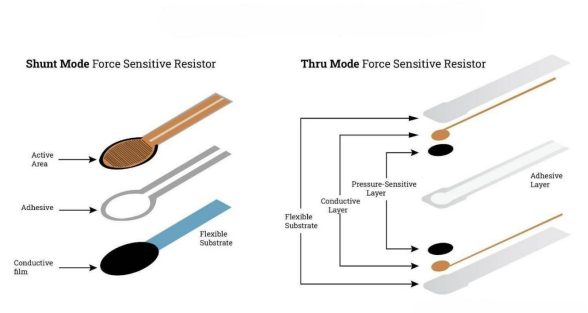
In the current wave of technological advancement, force sensors stand out as crucial components within the electronic components industry. This article delves into the definition, types, working principles, characteristics, advantages, and applications of force sensors.
Catalog
IV. Characteristics & Advantages
I. What are Force Sensors?
Force sensors are devices capable of measuring and detecting the magnitude and direction of forces applied to objects. They transform mechanical input forces such as weight, tension, compression, torque, strain, stress, or pressure into electrical output signals. These signals are used to accurately measure and monitor forces, either to alert operators or as inputs for controlling machinery and processes.
II. Working Principles
The fundamental concept behind force sensors involves various physical phenomena, including electromagnetic induction, capacitive changes, piezoelectric effect, and strain gauge effect. By converting these physical phenomena into electrical signals, sensors accurately measure the applied forces and output corresponding voltage or current signals.

III. Types
Force sensors come in several types based on their operating principles and application environments:
· Inductive Force Sensor: Inductive force sensors measure force using electromagnetic induction principles. When a force is applied, changes in the magnetic field induce currents in the sensor, which are then used to detect the force's magnitude.
· Capacitive Force Sensor: Capacitive force sensors detect force by measuring changes in capacitance. When a force is applied, the internal capacitance of the sensor changes, reflecting the magnitude of the force. These sensors are sensitive and find applications in pressure sensing, proximity detection, and touch screens.
· Piezoelectric Force Sensor: Piezoelectric force sensors utilize the piezoelectric effect to measure force. When force is applied, piezoelectric materials generate electric charges, which the sensor measures to determine the applied force. These sensors are known for their fast response and are used in dynamic force measurement applications.
· Piezoresistive Force Sensor: Piezoresistive force sensors operate based on the strain gauge effect. They measure force by detecting changes in the electrical resistance of materials under force. As the sensor deforms under external force, the resistance changes, allowing for precise force measurement.
IV. Characteristics & Advantages
Force sensors possess several key characteristics and advantages that make them widely used across various applications:
· High Precision: Capable of measuring forces with precision down to micrometers or smaller scales.
· High Sensitivity: Sensitive to small variations in force, enabling detection of subtle force changes.
· Fast Response: Quickly responds to changes in force, suitable for dynamic force measurement.
· Durability: Operates stably in harsh environments, with good mechanical strength and longevity.
V. Applications
Force sensors find extensive applications in diverse fields:
· Industrial Automation: Used for force monitoring and control in robotics and production lines.
· Automotive Industry: Applied in brake systems, steering systems, and seat pressure monitoring.
· Medical Devices: Utilized in surgical robots, prosthetics, and pressure-sensitive mattresses.
· Consumer Electronics: Integrated into devices like smartphones and tablets for touch screen force sensing.
VI. Conclusion
In conclusion, force sensors are integral to the electronic components industry, driving technological advancements and expanding application areas. With increasing demands for automation and precision, force sensors play an increasingly critical role in enhancing product performance, improving user experiences, and enabling precise control. Looking forward, as technology continues to evolve, force sensors will remain indispensable key technologies in various electronic devices and systems.




